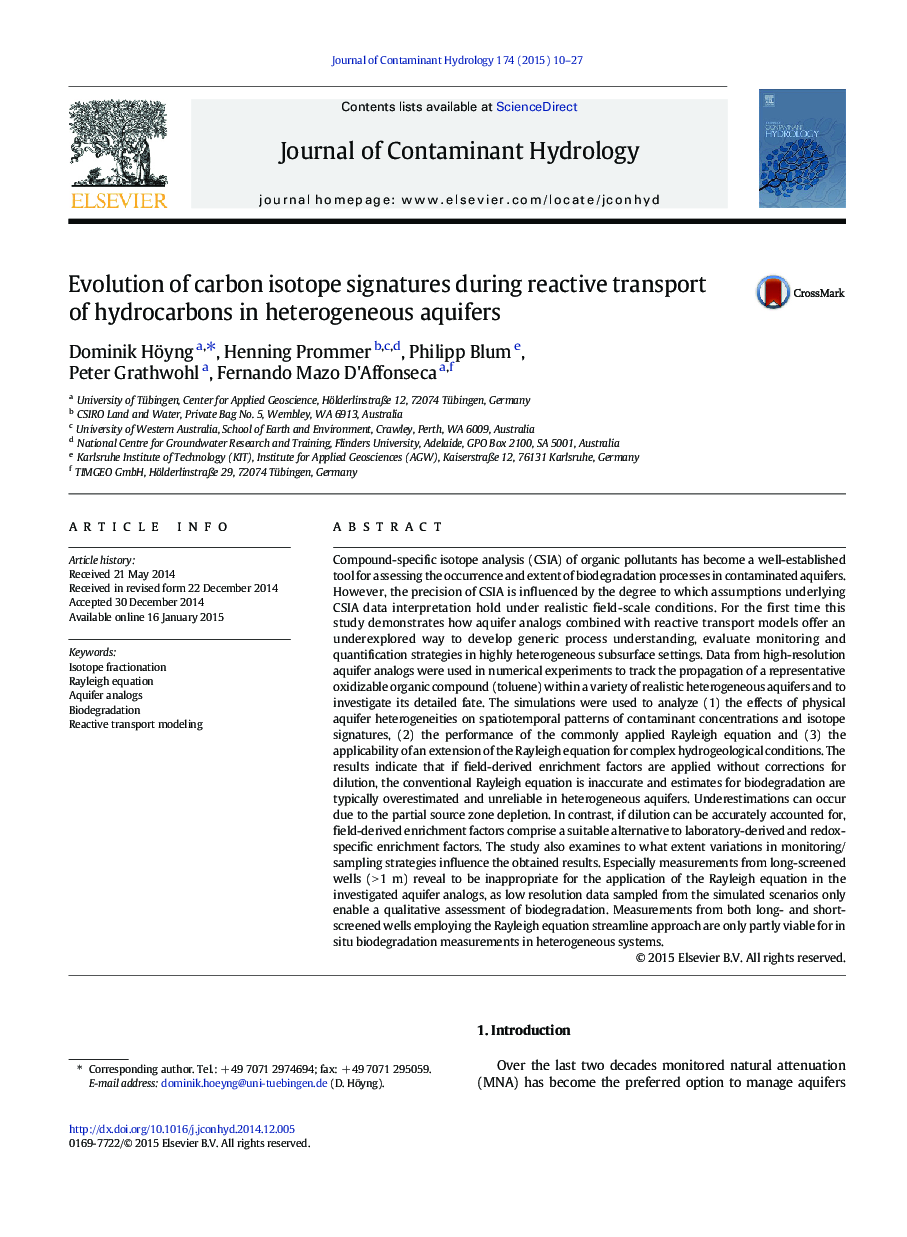| Article ID | Journal | Published Year | Pages | File Type |
|---|---|---|---|---|
| 4546469 | Journal of Contaminant Hydrology | 2015 | 18 Pages |
•Five high-resolution aquifer analogs were used for numerical reactive transport experiments.•The influence of heterogeneity on the evolution of carbon isotope signatures was quantified.•Challenges for quantifying CSIA-based biodegradation in heterogeneous aquifers were illustrated.
Compound-specific isotope analysis (CSIA) of organic pollutants has become a well-established tool for assessing the occurrence and extent of biodegradation processes in contaminated aquifers. However, the precision of CSIA is influenced by the degree to which assumptions underlying CSIA data interpretation hold under realistic field-scale conditions. For the first time this study demonstrates how aquifer analogs combined with reactive transport models offer an underexplored way to develop generic process understanding, evaluate monitoring and quantification strategies in highly heterogeneous subsurface settings. Data from high-resolution aquifer analogs were used in numerical experiments to track the propagation of a representative oxidizable organic compound (toluene) within a variety of realistic heterogeneous aquifers and to investigate its detailed fate. The simulations were used to analyze (1) the effects of physical aquifer heterogeneities on spatiotemporal patterns of contaminant concentrations and isotope signatures, (2) the performance of the commonly applied Rayleigh equation and (3) the applicability of an extension of the Rayleigh equation for complex hydrogeological conditions. The results indicate that if field-derived enrichment factors are applied without corrections for dilution, the conventional Rayleigh equation is inaccurate and estimates for biodegradation are typically overestimated and unreliable in heterogeneous aquifers. Underestimations can occur due to the partial source zone depletion. In contrast, if dilution can be accurately accounted for, field-derived enrichment factors comprise a suitable alternative to laboratory-derived and redox-specific enrichment factors. The study also examines to what extent variations in monitoring/sampling strategies influence the obtained results. Especially measurements from long-screened wells (> 1 m) reveal to be inappropriate for the application of the Rayleigh equation in the investigated aquifer analogs, as low resolution data sampled from the simulated scenarios only enable a qualitative assessment of biodegradation. Measurements from both long- and short-screened wells employing the Rayleigh equation streamline approach are only partly viable for in situ biodegradation measurements in heterogeneous systems.
